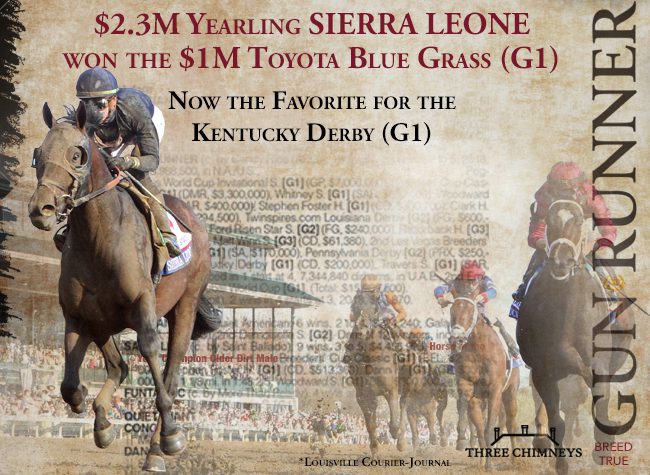By Bill Finley
When it comes to figuring out which trainers are taking an illegal edge it usually comes down to guesswork and innuendo, hardly the best way to police the sport. That's why The Jockey Club put Jerry Brown of Thoro-Graph and consultants McKinsey & Company to work and asked them to formulate an algorithm that uses speed-figure data to identify trainers that may be using performance-enhancing drugs.
The program, which was announced at the recent Jockey Club Round Table, is being made available to tracks through The Jockey Club's In Compass database.
When it comes to identifying possible cheaters, speed figures, a way to measure a horse's performance, are a good place to start. Horses have good days and bad days and can improve or decline from race to race. But when horses from a certain trainer repeatedly show dramatic improvement, particularly when making their first start for a new barn, that's a sign that there could be a problem.
Whether they use speed figures or not, handicappers are often the first to know when a trainer is likely using something stronger than hay, oats and water.
“Horseplayers are more aware of what's going on than anybody else and that's because we are actually handicapping these races in much more detail than trainers, owners or racetrack management,” Brown said. “We know who the guys are that you have to be concerned about. This is something that, way back, horseplayers were seeing and getting frantic about it. It used to be that there were just two guys you had to worry about and then over time, it became more and more. We were able to spot them.”
From his own numbers, Brown was able to see when a trainer was having results that he thought defied normal explanation, but he realized that his own suspicions carried only so much weight. That's where McKinsey came in.
“I knew that The Jockey Club was serious about this problem,” Brown said. “We've been trying for a while to find a way to use our data to help solve this problem. This program now is a natural outgrowth of that cause. You'll have a 5-year-old with established form jump up in the figures and the same trainers are getting a number of those. That's a problem. But The Jockey Club wanted to find some way to standardize it so it wasn't just Jerry Brown saying 'Watch this guy.' They brought McKinsey in to develop algorithms for which trainers they should be keeping an eye on. My part of it was to supply the data and to sit down with McKinsey to explain how our data worked.”
To avoid a “garbage in, garbage out” scenario, McKinsey had to know what mattered and what didn't. The program generally doesn't look at 2-year-olds since rapid improvement in such young horses is not out of the ordinary. They also had to understand the relevance of such things as surface changes, in particular that a move to the grass could be the reason why a horse improved.
The idea was to look at horses with established form, come up with a baseline number for their typical performance, and then flag instances where a horse, based on the Thoro-Graph numbers, far exceeded that baseline. Rather than just looking at when a horse made its first start for a new trainer, they looked at every race in the Thoro-Graph database over a four-year period.
The program flags a result whenever a horse runs a Thoro-Graph figure that is two or more points lower than its previous top. With the Thoro-Graph numbers, the lower the figure the faster the race. During the study that ran from 2016 to 2019, 5.5% of all starts met the criteria for being flagged. A full 17% of all trainers had statistically high rates of “exceptional” performances.
“After going through our data and working on the algorithms, they presented me with a list of people who jumped up as being people who needed to be watched,” Brown said. “It was really good. Out of 10 they listed there was only one that I hadn't had any doubts about, but they might have been right about that guy, too.”
Of course, a trainer can't be suspended just because a computer program shows they have a high rate of horses running exceptionally fast races that are hard to explain. The question then becomes how can a track use the data to help clean up the sport? There are no doubt some track managers who, used to looking the other way, won't pay any attention to it all. But there are ways to put the McKinsey numbers to use. For instance, a track may want to increase the rate of out-of-competition tests for a trainer who has been flagged and conduct post-race test on their horses no matter where they finish in a race. Putting surveillance cameras in the barns of trainers who made the list is another option. When, and if, the United States Anti-Doping Agency takes over the policing of the sport, there's no doubt that the agency will put the numbers to good use.
“The Jockey Club hired a detective agency to keep an eye on certain individuals,” Brown said, referring to the investigation that led to the indictments of Jason Servis, Jorge Navarro and others. “I imagine that's one of the things they may want to do again now that they have this data.”
The Thoro-Graph-McKinsey collaboration is not going to solve the sport's problem with illegal drugs, but if used properly it could be a valuable tool.
“Horseplayers are always the first to know what is going on,” Brown said. “Now there's an algorithm out there that mirrors what horseplayers think and know. That can only help.”
Not a subscriber? Click here to sign up for the daily PDF or alerts.





